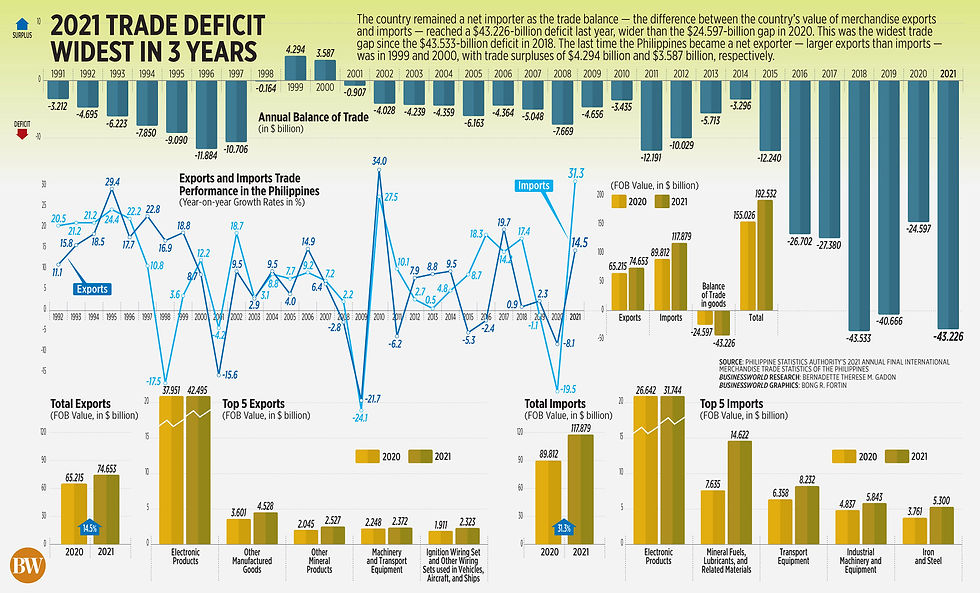- Ziggurat Realestatecorp
- Jul 16, 2022
- 2 min read
The Philippines is looking to woo more investors from the United States this year, reappointed Philippine Ambassador to the US Jose Manuel "Babe" Romualdez said on Wednesday.
During a “Kapihan sa Manila Bay” virtual forum, Romualdez said the Philippines needs to be “very aggressive and active” when it comes to looking for US investors as it will be competing with neighboring countries.
“There are many, many companies in the United States that are looking at starting to diversify from China to the ASEAN (Association of Southeast Asian Nations) region,” Romualdez said.
“Vietnam and Thailand [are] one of our biggest competitors.”
Romualdez said he will meet with Finance Secretary Benjamin Diokno and the country’s new economic team this Friday to discuss promoting investments in the Philippines.
Latest data from the Bangko Sentral ng Pilipinas showed foreign direct investment (FDI) net inflows posted a 48.3% increase to US$ 989 million in April this year from 667 million USD year on year.
From January to April this year, FDI inflows totaled US$ 3.4 billion, 12.1% higher than the 3.1 billion seen in the same period in 2021. Investors were mostly from Japan, the US, Malaysia and Singapore putting money in manufacturing, the real estate sector, construction industry and financial services.
Active during the pandemic
Romualdez noted that even during the pandemic, he was working with then Finance Secretary Carlos Domínguez to get foreign investors and noted that they were able to get two major investments.
One of them is from Cerberus Capital Management, a US-based equity firm that acquired a shipyard in Subic and KSA Communications.
“They are going to manage this Hanjin company in Subic that will now repair ships, not only from the US, the Philippines, Australia, Japan — there’s a lot of them,” Romualdez said, adding that while there are only about a thousand workers employed there, the facility can create up to 30,000 employment opportunities.
Meanwhile, Florida-based KSA Communications is reportedly investing US$11 billion to US$12 billion in the Philippines to build as many as 50,000 digital infrastructure towers.
“The best thing about these towers is that they’re building [it] from North to South,” Romualdez said.
Generalized System of Preferences
Romualdez said the Philippines’ US-Generalized System of Preferences (GSP) is “being worked out now.” The US-GSP is a trade program that provides eligible developing countries “duty-free treatment” for US imports.
The country’s US-GSP lapsed by the end of 2020 and is awaiting its renewal. Romualdez said the Philippines is working with Thailand and Vietnam, which are also waiting for their own GSP renewal.
“Indications from the [United States] Commerce Department is that they will in fact push that through,” Romualdez said.
Source: Philstar


